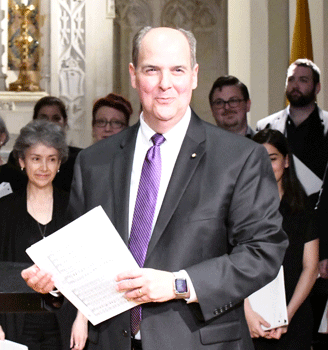
St. Malachy’s–The Actors’ Chapel, New York, New York, announces that John A. Romeri has received the 2019 Paul Creston Award.
Romeri is director of music and organist for Christ Cathedral (formerly the Crystal Cathedral), Diocese of Orange, California. He is the conductor of the newly formed Cathedral Choir, Vietnamese Cathedral Choir, Diocesan Children’s Choir, and the Diocesan Adult Choir. He is also host of the radio program, Music from the Tower, featuring sacred and classical music, broadcast each Saturday evening or on the website, www.christcathedralmusic.org. He previously served cathedral music positions in Philadelphia, Pennsylvania, and St. Louis, Missouri.
The Paul Creston Award was established in 2009 to honor the memory of Paul Creston and his legacy, having served 34 years as music director and organist at St. Malachy’s–The Actors’ Chapel. Award recipients embody Creston’s passion for the spiritual nature of composition and musical expression, and are chosen for their accomplishments in church music, as distinguished scholars and performing artists, and proponents of excellence in music and the arts. Past awardees include Frederick Swann (2009), Bruce Neswick (2010), David Higgs (2012), Janette Fishell (2014), Stephen Tharp (2015), Jennifer Higdon (2016), Timothy Sun and Cindy Ho (2017), and Jennifer Pascual (2018).
This year’s award ceremony took place May 10 at St. Malachy’s–The Actors’ Chapel, with guest musicians David L. Ball, Ryan Dodge, Michael Hey, and John A. Romeri, II, and The Actors’ Chapel Choir and Creston Singers under the direction of Stephen Fraser. For information: https://actorschapel.org.

